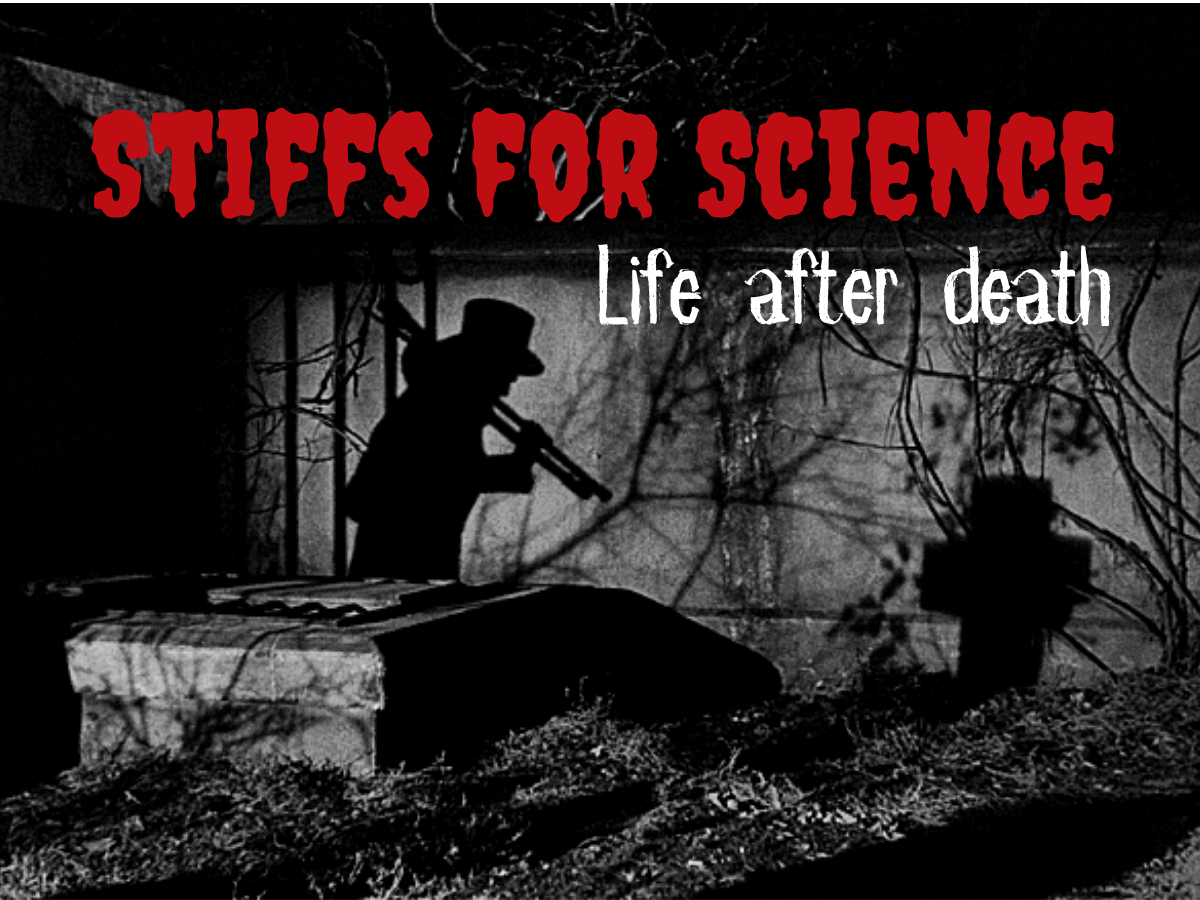Spiritualism: Our History with Otherworldly Communication
Our history and fascination with otherworldly communication.
By Rebecca Selem, Exhibits & Communication Coordinator
Rewind to 1860s America, when the spiritualism craze was taking off, thanks in part to the sensational knocking phenomenon of the Fox sisters of New York and the devastating death toll of the Civil War. The Fox sisters, Kate and Maggie, took the country by storm by claiming they had the ability to directly communicate with the dearly departed.
The number of Americans who lost their lives during the Civil War – about 750,000 – left a nation in deep grief and for many, embracing the notion that their loved ones were still around was the only thing that could fill the hole left by the deadliest conflict in American history.
Among middle-to upper-class families, it became commonplace to hold séances and invite a medium to conduct them. Doing this was costly but worth the funds for a chance to hear from loved ones beyond the veil. During a séance, a medium would do things like call out the alphabet and wait for a response for certain letters to spell out answers to questions. Like a tap, knock, or another sign.
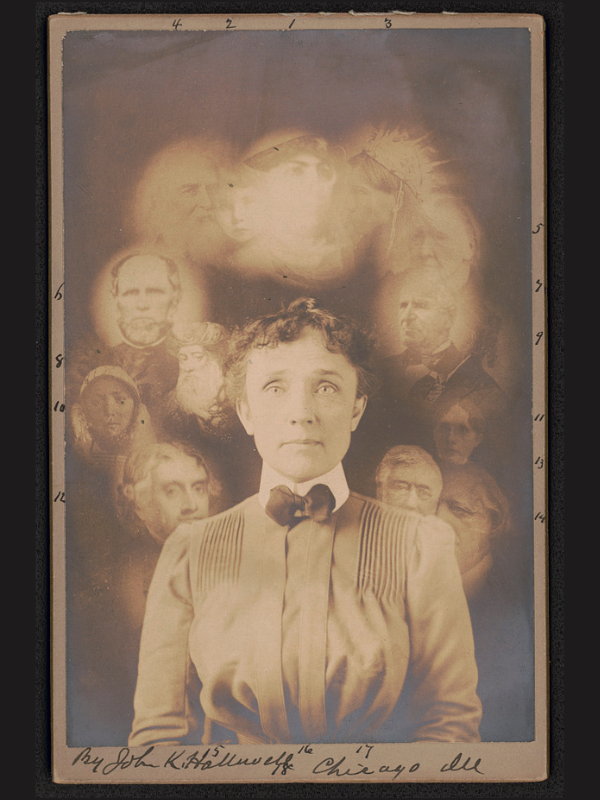
Photo portraying a woman during a séance, 1901. From the Library of Congress Prints and Photographs Division.
Mary Todd Lincoln and Queen Victoria are notorious examples of people who engaged in this practice. Distraught after her 11 year-old son Willie died of typhoid fever, Mrs. Lincoln held a number of séances in the White House to try to communicate with him. President Lincoln also attended a few of these gatherings.
Queen Victoria arranged a number of séances at Buckingham Palace to talk to her dearly departed husband, Prince Albert.
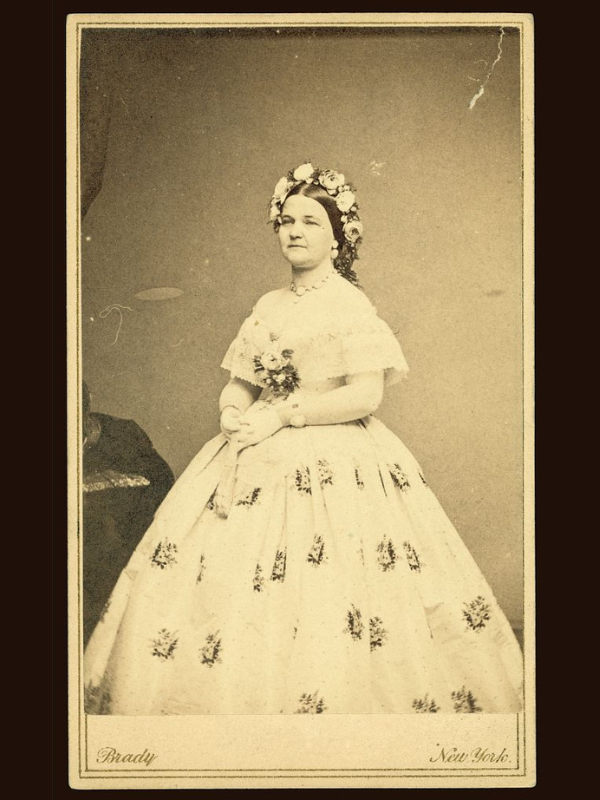
Mary Todd Lincoln, 1861. From the Library of Congress Prints and Photographs Division.
Taking the lead of the Fox sisters, people began coming forward claiming that they too had the ability to receive messages from deceased loved ones, so it became increasingly difficult to find a credible medium to conduct a séance. Famed illusionist, Harry Houdini, actually hired an investigative team in the 1920s to help him take down fraudulent mediums after he believed to have been tricked by one. One of his most talented investigators, Rose Mackenburg, exposed hundreds of imposters. Despite her decades of experience with fake mediums, she remained a believer in the afterlife.
In the 1880s, another method used to communicate with the dead was discovered: the talking board. This method of communication circulated amongst spiritualists across Ohio, but it wasn’t until 1890 that it became known as the Ouija board and was marketed to the masses. No one knows where the concept for the game came from, but the original talking boards were fashioned out of paper and a glass object serving as the planchette (from the French for “little plank”).
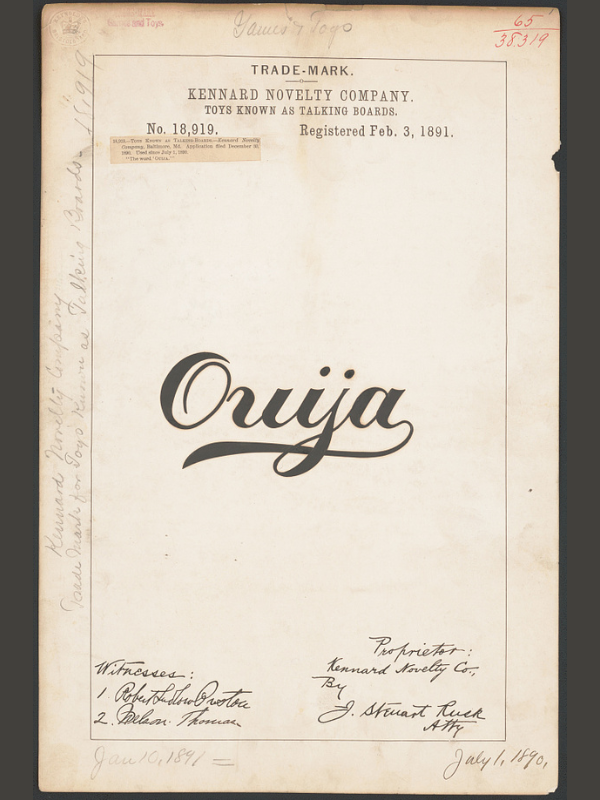
Trademark register for the Ouija talking board, 1891. From the Library of Congress Prints and Photographs Division.
It’s said that the board actually named itself. When the makers were asking the board what its name should be, it spelled out “ouija” and then “Good luck.”
Through the decades, the board would rise in popularity during times of uncertainty – 1910s, 1920s, 1940s, and another rise in 1967, following the war in Vietnam, the summer of love, and the Civil Rights Movement.
The board, although mysterious, was always viewed as an innocent and family friendly pastime. That all changed in 1973 when The Exorcist came out in theaters. In the movie, a young girl becomes possessed by a demonic entity after playing with the Ouija board by herself. The movie invoked such fear in audiences and changed the way many viewed communication with the spirit world. Religious groups even deemed it an evil and satanic method of communication.
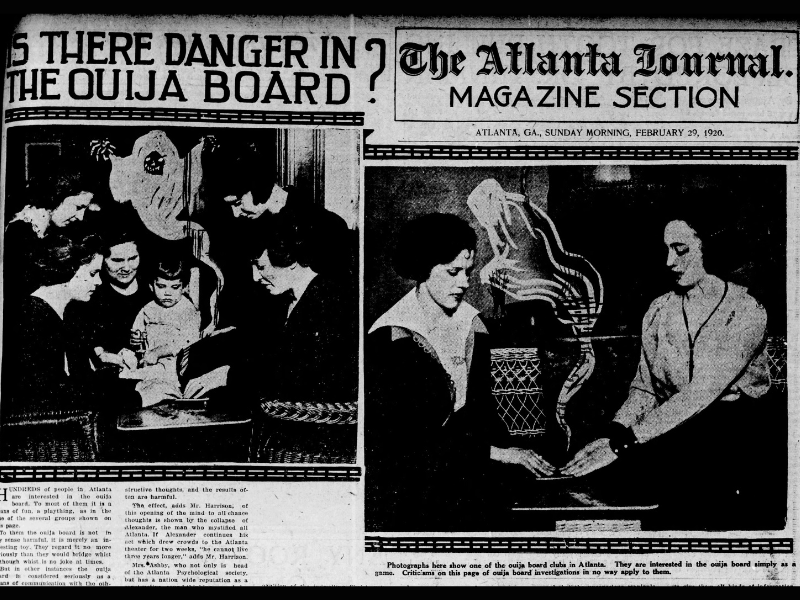
From The Atlanta Journal, 1920.
The Ouija board is viewed as a form of divination which is defined as “the practice of determining the hidden significance or cause of events, sometimes foretelling the future, by various natural, psychological, and other techniques.” Tarot/oracle cards, scrying, and astrology are just a few of the many examples of divination used through the millennia and into the present day. It is believed that one’s experience with divination is typically determined by one’s intention.
Additional Reading
https://www.history.com/news/ghost-hoax-spiritualism-fox-sisters
https://www.atlasobscura.com/articles/rose-mackenberg-houdini-ghost-buster
https://www.history.com/news/spiritualism-communication-dead-figures
https://www.whitehousehistory.org/seances-in-the-red-room
https://www.smithsonianmag.com/history/the-strange-and-mysterious-history-of-the-ouija-board






